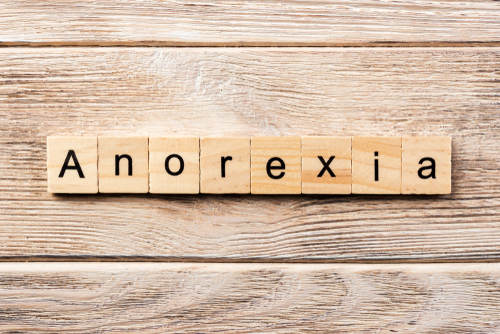
The Diagnostic and Statistical Manual of Mental Disorders, Fifth Edition (DSM-5) lists bulimia nervosa under the Disorder Class: Feeding and Eating Disorders as a complex brain disorder. Bulimia nervosa, also referred to as bulimia, is one of the three most commonly diagnosed eating disorders in America. The Mayo Clinic defines bulimia as a “serious eating disorder marked by binging, followed by methods to avoid weight gain.” Hence, bulimia is essentially characterized by episodes of uncontrolled binging (extreme overeating), typically followed by purging (making oneself vomit). An individual struggling with bulimia may also purge via the misuse of various medications related to weight loss, such as laxatives, diuretics, enemas, and/ or excessive exercise. The episodes of binging and purging is often referred to as a binge-purge cycle. Depending on the individual, eating binges can range from occurring twice a week to several times a day. Bulimia is not solely about one’s weight, but also revolves around one’s self-image. The psychological nuances and physical consequences that can arise from bulimia are what makes it such a complex disorder. The damage that occurs from prolonged malnutrition and the unhealthy cycle of binging and purging can lead to significant short and long-term physiological complications. While bulimia is a chronic disorder, with proper treatment an individual can learn the tools and skills needed to develop a healthy and sustainable relationship with food.
Treatment
Every individual is different and will require some form of customized treatment when it comes to bulimia. There are many different mental health treatment options and distinct forms of therapies used to treat bulimia. The nuanced needs of a person diagnosed with bulimia will greatly inform which psychotherapeutic methods are included in one’s treatment plan. In order to treat bulimia through therapy, a person’s treatment plan could comprise of one or more of the following types of therapy:
- Cognitive behavioral therapy (CBT) is based off of the notion that one’s thoughts govern one’s feelings, which in turn affects one’s behaviors. According to the Society of Clinical Psychology, “In CBT, the therapist works collaboratively with the patient to disrupt the factors maintaining the binge-purge cycle with the goal to achieve abstinence from these behaviors.”
- Interpersonal therapy (IPT) is a therapeutic modality that is most often used to treat individuals who suffer from anxiety disorders, eating disorders, depression, as well as other psychiatric disorders, including bulimia nervosa. Interpersonal therapy focuses on how a person’s communications and interactions with other people affect his or her own mental health. Through interpersonal therapy an individual will learn to resolve and adjust unhealthy interpersonal complications, resulting in a symptomatic recovery.
- Dialectical behavior therapy (DBT) is a type of cognitive behavioral therapy that places greater emphasis on the psychosocial aspect of therapy. DBT can benefit an individual diagnosed with bulimia by helping to foster self-management skills, lower stress, reduce anxiety, and learn to control destructive eating behaviors. The goals of DBT are to help an individual learn to establish healthy coping mechanisms that can be applied to environments that would have otherwise provoke destructive eating behaviors. It helps individuals learn how to reduce emotional reactivity and improve their interactions with others. DBT promotes acceptance and teaches skills to enable an individual to live in the moment and cope with emotional triggers that may otherwise perpetuate the binge-purge cycle and other unhealthy symptoms and behaviors associated with bulimia.
A treatment plan for bulimia will be carefully tailored so as to effectively accommodate all of the individual’s mental health needs.
Disclaimer:
The information above is provided for the use of informational purposes only. The above content is not to be substituted for professional advice, diagnosis, or treatment, as in no way is it intended as an attempt to practice medicine, give specific medical advice, including, without limitation, advice concerning the topic of mental health. As such, please do not use any material provided above as a means to disregard professional advice or delay seeking treatment.



